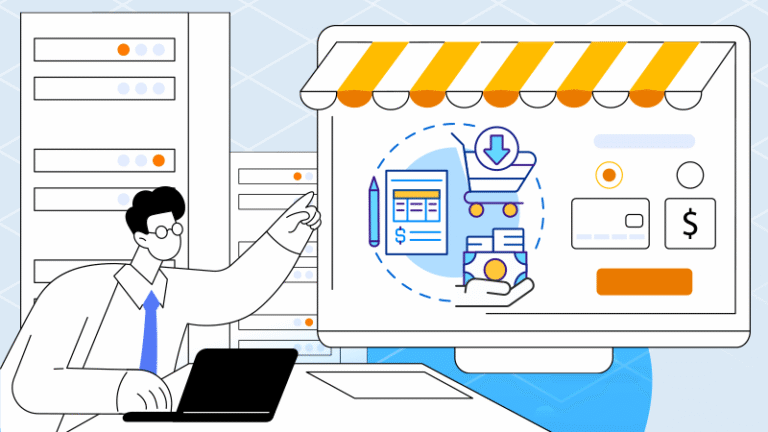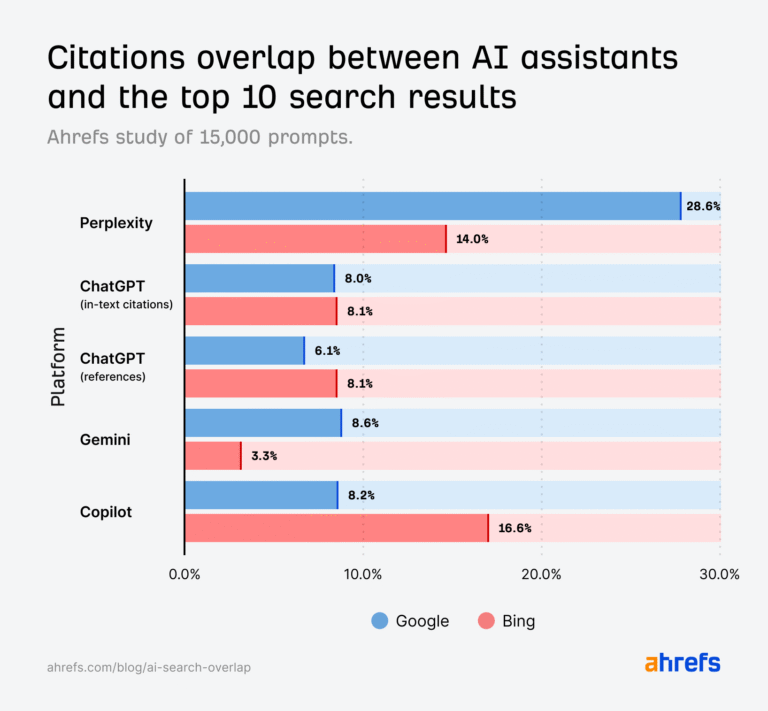‘Your domain name is about to expire!’ This scary email lands in thousands of business owners’ inboxes every day. The thing is that many of these urgent messages are actually scams.
I’ve been helping website owners avoid these traps for many years. Along the way, I’ve seen these scams evolve from simple email tricks to sophisticated schemes that can fool even experienced website owners.
I’ve created this guide to show you what these domain name scams look like and how to protect yourself. Whether you own one domain name or a hundred, these tips will help you keep your digital property safe.

What Are Domain Name Scams?
Have you ever received an alarming message telling you that your domain name is about to expire? Maybe it even demanded immediate payment to prevent your website from being taken down.
Unfortunately, scenarios like these are common in the world of domain name scams.
Domain name scams are deceptive practices aimed at domain owners or potential buyers, designed to extract money or sensitive information.
Scammers use a range of tactics—emails, phone calls, even traditional mail—to catch you off guard. They often pretend to be real organizations and make their communications look official.
Now, let’s take a look at the most common domain name scams you may see.
1. Misleading Renewal Notices and Invoices
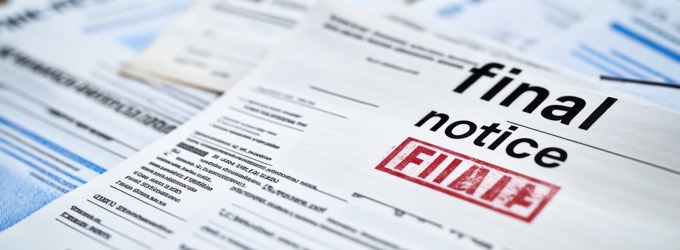
A few months back, I opened my inbox to find an email with the subject line: ‘URGENT: Your domain name is about to expire!’
The email looked official, and it even had a familiar logo and included my domain name.
But something felt off.
The renewal fee they asked for was twice what I usually pay, and the sender’s email address wasn’t from my domain name registrar. That’s when I realized it was a scam trying to trick me into paying unnecessary fees or transferring my domain name.
⚠️ How These Scams Work
This practice is often known as ‘domain slamming’. Scammers might might:
- Send official-looking emails or letters that mimic the branding of legitimate registrars.
- Use urgent language like ‘Immediate Action Required’ or ‘Final Notice’ to pressure you to act without thinking.
- Inflate renewal fees, charging prices much higher than standard rates.
- Trick you into transferring domains by sneakily including transfer authorization, so you unintentionally move your domain name to another registrar.
It’s not just digital communications. Some people get phone calls from scammers posing as customer service representatives, insisting on immediate payment.
And I’ve even received letters in the mail that looked real. They had professional letterheads and detailed information about my domain name.
One letter claimed I’d lose my domain name if I didn’t pay a steep renewal fee immediately. If I hadn’t been cautious, I might have fallen for it.
✅ How to Protect Yourself
Here are a few things you can do to protect yourself from misleading renewal notices and invoices:
- Verify the Sender: Always check that emails, calls, or letters are truly from your domain registrar. Look at the email address or call back using the official number on their website.
- Check Your Domain Name’s Expiration Date: Log in to your domain registrar’s account dashboard to check when your domain name expires.
- Avoid Acting on Urgency Alone: Scammers rely on panic. Take a moment to breathe and assess the situation.
- Contact Your Domain Registrar Directly: If in doubt, use official contact details, not the ones provided in the suspicious communication.
- Educate Your Team: If others in your organization handle domain matters, then make sure they’re aware of these scams to prevent accidental loss.
For more details, just see the last section in this article.
2. Phishing Scams Leading to Domain Hijacking

I once received an email that seemed to be from my domain registrar. It had all the right logos and mentioned my domain name. The subject line read, ‘Important: Security Update Required.’
But before I clicked the link in the email, I noticed the URL didn’t look right. I realized it was a phishing attempt.
⚠️ How These Scams Work
Phishing scams are designed to trick you into handing over your login credentials. Scammers create emails or websites that mimic legitimate companies, hoping you’ll:
- Click on malicious links that lead to fake login pages that capture your username and password.
- Provide sensitive information through forms or direct replies that ask for personal or account details.
- Download infected attachments that install malware that can compromise your security.
Remember, phishing attempts aren’t limited to email. Scammers may also use phone calls, text messages, and social media.
Once they have your login information, they can access your domain management account. From there, they can do something called domain hijacking.
With control over your account, scammers can transfer your domain name to another registrar without your permission. They can also redirect your website to malicious sites or hold it hostage until you pay a ransom.
Remember, legitimate companies will never ask you to provide sensitive information through unsecured channels.
✅ Protecting Yourself From Phishing and Domain Hijacking
Here are a few things you can do to protect yourself against phishing and domain hijacking:
- Enable Two-Factor Authentication (2FA) for Your Domain Account: This adds an extra layer of security by requiring a second form of verification. Most registrars offer two-factor authentication (2FA) options—usually via an authenticator app or SMS code. I use an app for added security.
- Verify Before You Click: Inspect the email address because scammers often use addresses that look similar to official ones. Before clicking, hover over the link to see where it actually leads. If it doesn’t match the official website, don’t click.
- Access Accounts Directly: I always log in to my domain account by using a trusted bookmark. Even if the email seems legitimate, navigating to the site directly is safer.
- Keep Software Updated: Updates often include security patches that protect against vulnerabilities. Regularly update your computer’s operating system, antivirus software, and any applications you use to manage your domain names.
- Monitor Account Activity: Some registrars allow you to receive notifications for account changes. I make it a habit to log in weekly and review my domain settings.
You can learn more in the last section of this article.
3. Fake Domain Purchase and Appraisal Scams

Imagine getting an unsolicited email from someone eager to buy your domain name at a premium price.
Before you start celebrating, you need to make sure that the offer is legitimate.
⚠️ How These Scams Work
Scammers often use this tactic to exploit domain owners:
- They express strong interest in your domain, often offering a price that’s above market value. (Related: Learn how much your website is worth.)
- They insist that you obtain a ‘certified domain appraisal’ from a specific service they recommend.
- The supposed buyer disappears once you pay for the appraisal, leaving you out of pocket.
- In some cases, they might use this scam to collect sensitive information about you or your domain name.
I’ve heard stories from other website owners who have come across similar schemes. These scams prey on the excitement of making a profitable sale.
✅ Protecting Yourself from These Scams
Here’s how you can protect yourself against fake purchase and appraisal scams:
- Research the Buyer: Look up their name, company, and contact details. Legitimate buyers usually have a traceable digital footprint. You can also see if others have reported interactions with them. (Related: Learn how to find out who owns a domain name.)
- Be Skeptical of Appraisal Requests: Legitimate buyers don’t usually require sellers to pay for appraisals. Be cautious if they want you to use a specific company you’ve never heard of. If you decide to get an appraisal, then choose a reputable service you know and trust.
- Avoid Sharing Sensitive Information: Don’t provide unnecessary personal or financial details. Instead, stick to verified email addresses and official platforms.
- Use Secure Transaction Methods: Services like Escrow.com can add a layer of protection for both parties. And make sure you keep records of all communications and agreements.
I explain these safeguards in more detail at the end of this article.
4. Trademark Infringement and Related Domain Scams

Businesses may receive alarming messages claiming that someone is attempting to register similar domain names that potentially infringe on their trademark.
These communications often ask for immediate action to prevent brand damage, creating a sense of urgency and concern.
⚠️ How These Scams Work
Here are some ways scammers exploit brand protection concerns:
- They claim that someone is registering domain names that closely resemble your brand or trademark.
- Phrases like ‘urgent action required’ or ‘immediate attention needed’ are used to pressure businesses into quick responses.
- Scammers may suggest purchasing additional domain extensions or services to ‘safeguard’ the brand, which are often unnecessary.
These scams often arrive via email or phone. To appear legitimate, they may use official-sounding language or legal terminology. They want to frighten you into making a rushed decision.
✅ Protecting Against Trademark Infringement Scams
To avoid falling victim to these schemes:
- Don’t Panic and Rush to Respond: Take time to verify if there’s a real problem. Scammers want you to act without thinking.
- Verify the Claims: Check the legitimacy of the organization contacting you. Look for official contact information and verify through trusted sources. Also, look for red flags such as generic greetings, spelling errors, or email addresses that don’t match official domains.
- Consult a Legal Professional: An intellectual property attorney can assess the situation and advise on appropriate actions. Knowing the legal protections already in place can provide reassurance and guide decisions.
- Conduct Independent Checks: Perform a WHOIS lookup to check if the domains in question are actually being registered or are available. Also, if you’re encouraged to register additional domains, determine if this aligns with the brand’s strategy and needs.
Check the end of this article for more detailed information on how to protect yourself.
5. Homograph Attacks (Typosquatting)

Domain scammers often use a trick called a homograph attack. They register domain names that look almost identical to legitimate ones, but use different characters.
For example, they might register ‘exɑmple.com’ instead of ‘example.com’. The ‘a’ looks the same, but it’s actually a different character from another alphabet.
This technique makes scam emails look legitimate at first glance. When you receive a message about your domain name, always check the sender’s email address and any links carefully for these subtle character substitutions.
⚠️ How These Scams Work
Homograph attacks trick us because we usually read words by how they look at first glance, instead of carefully checking each letter.
Scammers register domain names that are visually similar to popular sites by:
- Using Lookalike Characters: Replacing letters with identical or near-identical characters from different alphabets (e.g., Cyrillic ‘ɑ’ instead of Latin ‘a’).
- Common Misspellings: Registering domain names with common typos (e.g., ‘gooogle.com’ instead of ‘google.com’).
- Alternate TLDs: Using different top-level domain names (TLDs) like ‘.net’ instead of ‘.com’ to catch users off guard.
Once you visit these fake sites, scammers may steal your personal information by prompting you to log in or enter sensitive data.
Alternatively, they can download malicious software onto your device or display unwanted ads or content to generate revenue through ad impressions or affiliate links.
✅ Protecting Yourself from Homograph Attacks
Here’s what I’ve learned to do to stay safe:
- Double-Check URLs: Hover over links to see the actual URL before you click them. Then, when you arrive at the website, look carefully at the address bar to make sure it is correct.
- Use Bookmarks for Important Sites: Avoid typing URLs manually or clicking links in suspicious emails. Instead, create bookmarks for frequent sites so that you can navigate them quickly.
- Enable Browser Warnings: Modern browsers often have safeguards against known malicious sites. Plus, you can consider adding a reputable security extension to your browser that warns about suspicious websites.
- Be Wary of Unsolicited Communications: Don’t click on links from unexpected emails or texts, even if they seem urgent. If you are in doubt, please contact the organization directly using its official contact information.
- Educate Your Team and Family: Let others know about these scams, especially if they have access to sensitive accounts. Then, set guidelines for verifying communications and reporting suspicious activity.
I cover these strategies in more detail later in this article.
6. Related: SEO and Search Engine Submission Scams

A while back, I received an email offering to submit my website to ‘hundreds of search engines’ for a small fee. The message promised quick results and top rankings.
It sounded tempting—who wouldn’t want their site to be easily found online?
Unfortunately, this is another common type of scam.
⚠️ How These Scams Work
SEO and search engine submission scams prey on the desire to get more traffic. Scammers might:
- Offer to submit your domain to numerous search engines. But major search engines like Google and Bing automatically crawl and index websites, and you can submit your site to search engines for free.
- Promise top rankings overnight. But genuine SEO is a long-term strategy, and no one can guarantee instant top positions.
- Request payment for secret algorithms or insider knowledge. But search engine algorithms are proprietary and closely guarded. Anyone claiming insider access is misleading you.
These offers often come via unsolicited emails or ads and use buzzwords like ‘guaranteed traffic’ or ‘instant SEO success’ to lure you in.
✅ Protecting Yourself from SEO Scams
Here’s what I’ve learned to do when confronted with these tempting offers:
- Research Before You Act: Look up reviews or complaints about them online. Be skeptical of phrases like ‘instant results’ or ‘secret methods’.
- Understand How Search Engines Work: Know that major search engines will find and index your site automatically. And understand that SEO takes time and involves optimizing content, improving site speed, and other techniques.
- Be Wary of Unsolicited Offers: Avoid cold emails. Reputable SEO firms don’t typically send unsolicited messages promising instant results. Scammers may urge you to act quickly to secure a deal, but don’t let urgency push you to act.
- Follow Reputable SEO Practices: Learn the basics. Understanding fundamental SEO can help you spot unrealistic claims.
- Consider Trusted Professionals: If you need help, then work with established SEO experts who have verified testimonials.
- Protect Your Information: Be cautious if anyone asks for login credentials or financial information upfront. And if you do decide to engage a service, make sure the transactions happen securely.
In the next section of this article, I’ll explain in more detail the best strategies for protecting yourself from domain name scams.
Tips to Protect Yourself From Domain Name Scams

Over the years, I’ve used several strategies to keep my domain names safe from scammers. Here are some steps you can take to safeguard your domain names.
✅ Enable Registrar Lock
One of the first things I did after registering my domain names was to enable registrar lock, which is also known as domain lock. This simple setting prevents unauthorized transfers of your domain name to another registrar.
Simply log in to your domain registrar’s control panel and look for the domain lock option. In the example below, it is labeled ‘Transfer Lock’, but some registrars may use different wording.
If you’re unsure, reach out to your registrar’s support team for guidance.
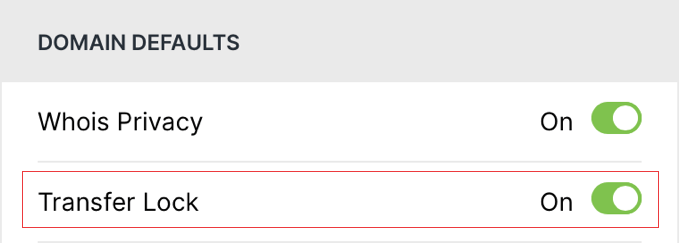
✅ Use WHOIS Privacy Protection
When I first registered a domain name, I was surprised to find my personal contact information listed publicly in the WHOIS database. This visibility can make you a target for scammers.
By enabling WHOIS privacy protection, your personal details are hidden from public view.
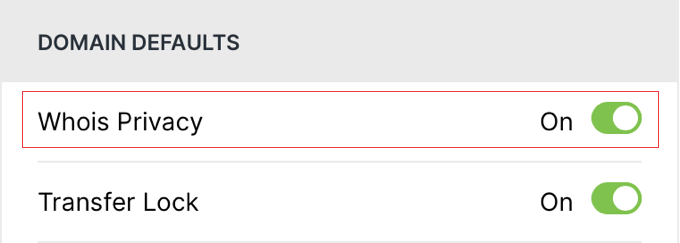
If you’re curious about how this works, our guide on how to find out who actually owns a domain name explains how to find domain ownership information and the importance of privacy.
✅ Regularly Monitor Your Domain Name Status
It’s easy to forget renewal dates, especially if you have multiple domain names.
I recommend setting up domain expiry reminder emails directly with your domain registrar and enabling automatic domain name renewals.
For more information, see our guide on how to check your domain expiration date.
✅ Educate Your Team
If you have team members who handle domain-related tasks, it’s important that they also know about these scams.
You can hold brief sessions with your team to discuss common scams and how to identify them. Plus, you should set up clear procedures for verifying whether an email is legitimate and how you will approach renewing domains.
✅ Verify Communications
Scammers often send messages that appear urgent and legitimate. I’ve made it a habit never to act on such messages without verifying them.
Look at the email address or phone number carefully. Scammers often use addresses that are similar but not identical to official ones.
And instead of replying to the email or clicking on provided links, go directly to your registrar’s website or call them using the number on their official site.
✅ Use Two-Factor Authentication (2FA)
Adding an extra layer of security can make a big difference. I enabled 2FA on my domain registrar accounts, so even if someone guesses my password, they can’t access my account without the second verification step.
Most domain registrars offer 2FA options, which are usually found in the account security settings. For example, some registrars let you enable 2FA with a simple ‘Two-Step Sign In’ toggle switch.
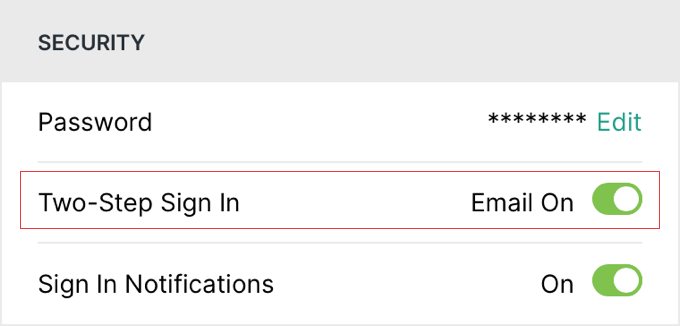
Tip: You can also add two-factor authentication in WordPress to protect your website.
✅ Deal Only with ICANN-Accredited Registrars
Choosing a reputable registrar can save you a lot of trouble down the line. ICANN-accredited registrars follow reputable standards and are less likely to engage in suspicious practices.
For recommendations, see our pick of the best domain name registrars.
✅ Keep Your Contact Information Up to Date
Ensure that your domain’s contact information is up to date. I review my contact details every year or whenever there’s a change.
If your registrar needs to reach you for important updates or verifications, then outdated contact information can cause delays.
✅ Be Skeptical of Unsolicited Offers
Whether it’s an email about SEO services or a call from someone wanting to buy your domain, approach unsolicited communications with caution.
Don’t agree to anything on the spot. Take the time to verify the offer or service. If you are unsure, then seek advice from trusted colleagues or industry experts.
Frequently Asked Questions About Domain Name Scams
Many website owners worry when they receive messages about their domain names. Based on my experience helping website owners, here are answers to the most common domain security questions.
1. What is a domain name scam?
Domain name scams are deceptive practices that try to trick domain owners or potential buyers into giving up money or sensitive information.
Scammers use tactics like fake renewal notices, phishing emails, and misleading offers to exploit unsuspecting individuals.
2. How can I tell if a renewal notice is a scam?
Phrases like ‘Immediate Action Required’ or ‘Final Notice’ are often used by scammers. You should also be wary of emails or letters from companies you don’t recognize.
Besides that, watch out for renewal costs that are significantly higher than your usual rate. And always verify any renewal notice by logging into your registrar’s website or contacting their customer support directly.
3. What is domain slamming?
Domain slamming is when scammers send misleading transfer or renewal notices to trick you into switching domain registrars or paying unnecessary fees.
Make sure you read all messages carefully and check that they are from your actual domain registrar. And always be skeptical of unexpected emails or letters about your domain name.
4. How do phishing scams lead to domain hijacking?
Phishing scams trick you into revealing your login credentials by mimicking your domain registrar’s website or communications.
I once got an email that looked like it was from my domain registrar, asking me to log in due to ‘suspicious activity’. Instead of clicking the link, I accessed my account directly and found everything was fine.
I recommend you enable Two-Factor Authentication (2FA) to add an extra layer of security. Also, never click suspicious links, and navigate to your registrar’s site manually.
Finally, use strong, unique passwords, and avoid using the same password across multiple sites.
5. What should I do if someone offers to buy my domain?
While it can be exciting to receive an unsolicited offer, make sure to be careful. Red flags include when they insist you pay for an appraisal service and make very high offers as bait.
My advice is to research the buyer, verify their credibility, and never pay upfront fees.
6. Are the trademark infringement notices I receive always legitimate?
Not necessarily. Scammers try to use fear around brand protection.
Watch out for urgency and pressure. Scammers often push you to act quickly and demand fees to ‘protect’ your brand.
7. How do homograph attacks (typosquatting) work?
Scammers register domain names that look like yours by using similar or international characters. For example, they may replace ‘o’ with ‘0’ (zero) in a domain name.
Be sure to double-check URLs before clicking on links or entering information. And it’s best to navigate to important sites using saved bookmarks.
8. What should I do if I suspect I’ve been targeted by a scam?
First, don’t engage and avoid responding to the scammer. Next, change your passwords to secure your accounts immediately.
Finally, you should contact your domain registrar and inform them of the suspicious activity. You can also report the scam to the appropriate authorities or online platforms.
9. Can someone steal my domain name?
Yes, domain hijacking is a real threat.
That’s why we recommend using strong passwords and two-factor authentication (2FA) when logging in to your domain registrar account. This makes unauthorized access more difficult.
Also, you should regularly monitor your domain status and consider using a registrar lock. This adds an extra layer of security against unauthorized transfers.
10. Why am I receiving so many unsolicited emails about my domain?
If your domain’s WHOIS information is public, then scammers can easily find your contact details.
The solution is to enable WHOIS privacy protection, which hides your personal information from public databases.
I hope this tutorial helped you learn about common domain name scams and how to avoid them. You may also want to see our guide on how to check domain name availability or our expert pick of the best domain name generators to help you pick a domain fast.
If you liked this article, then please subscribe to our YouTube Channel for WordPress video tutorials. You can also find us on Twitter and Facebook.

